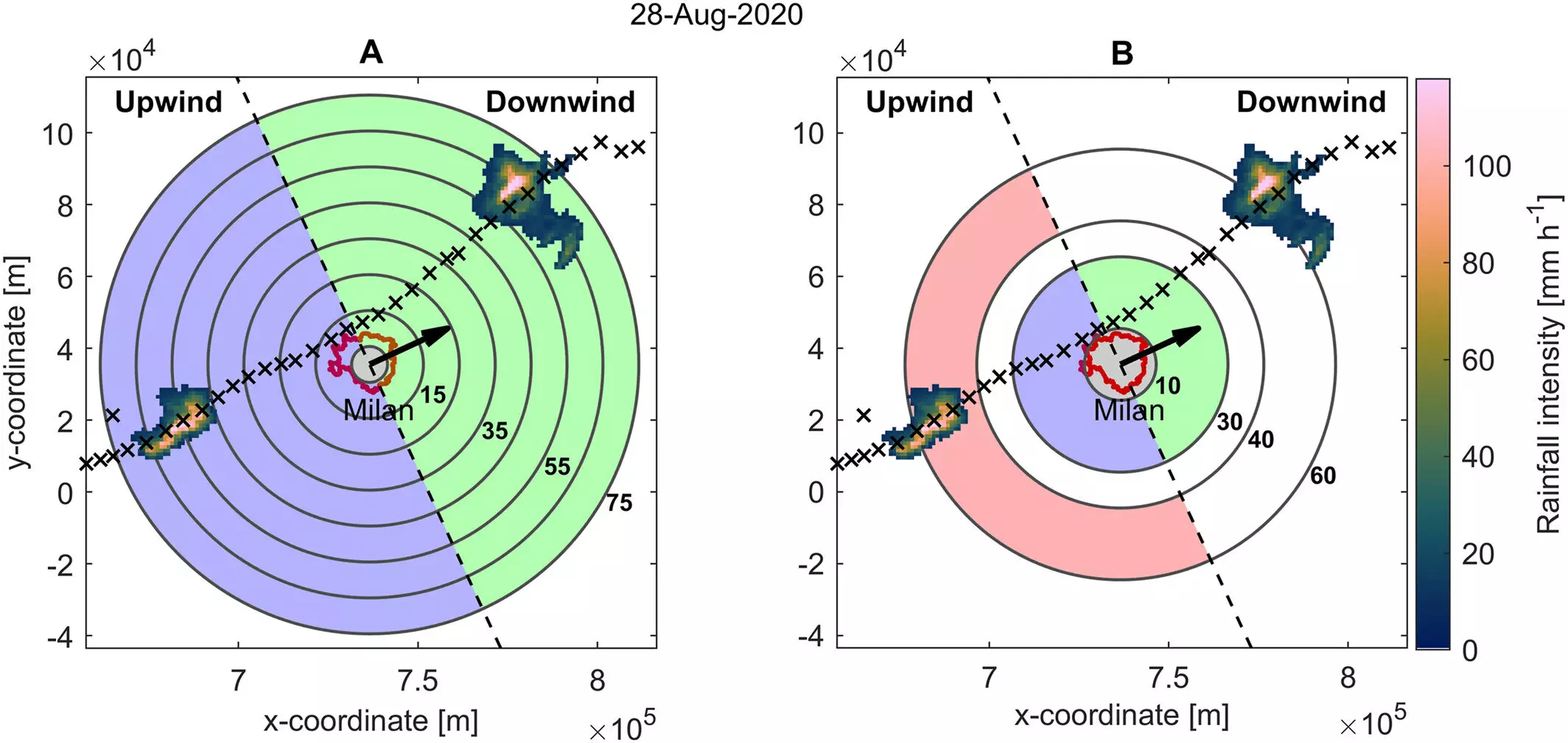As global urbanization escalates, cities are not only becoming more populated but also experiencing uniquely intense summer storms. Recent research has examined how urban landscapes influence storm patterns, leading to a different understanding of storm phenomena. This evolving body of work emphasizes the need for city planners to acknowledge the unique storm dynamics prevalent in urban environments, especially concerning flood mitigation.
The research indicates that urban areas experience a higher frequency of storms with more considerable intensity than their rural counterparts. It also reveals that larger cities contribute to an even more significant amplification of precipitation. By investigating various cities, researchers have uncovered trends previously hidden in singular city studies, which could profoundly affect urban flood preparedness.
The intensity and distribution of rainfall in urban areas can vary dramatically, a phenomenon likened to a sprinkler system versus a fire hose. In cities, storms often produce concentrated bursts of rainfall, posing a severe risk of flooding, particularly when drainage infrastructure is insufficient. The recent findings underscore that cities are not just affected by storms; they actively generate them, exacerbating local flood risks.
Lead researcher Herminia Torelló-Sentelles, an atmospheric scientist from the University of Lausanne, champions greater awareness of urban flood risks as essential for effective urban planning. The evidence shows that while some individual storms exhibit rain distribution generally associated with rural areas, urbanization creates conditions that lead to significantly greater rainfall accumulation in concentrated locales.
The research identifies several factors that contribute to storm development over cities. One primary driver is the urban heat island effect, where cities become warmer than adjacent rural regions. This temperature difference can create uplift currents as warm air rises over urban areas, encouraging cloud formation and precipitation.
Additionally, aerosol pollution found in urban settings also plays a crucial role in storm dynamics. Depending on their chemical composition, aerosols can either enhance or suppress rainfall, adding another layer of complexity to storm formation over cities. The interplay between these elements suggests that city infrastructure and environmental policies must evolve in tandem with urban development to effectively manage flood risks.
The research analyzed comprehensive weather data across eight diverse cities, including Milan, Berlin, London, Phoenix, and Atlanta, revealing unique patterns specific to each locale. For instance, while most cities showcased intensified rainfall, patterns varied significantly. In larger cities, the frequency of intense storms increased markedly. However, in cities such as Berlin and Phoenix, storm formation rates were comparable to rural areas, suggesting that individual city characteristics significantly influence storm behavior.
The study’s findings also indicate that rainfall intensity can vary by time of day, with some cities experiencing heightened storm activity during daylight hours, while others exhibited increased intensity at night. These variations highlight the necessity for tailored flood management strategies that accommodate specific storm patterns in individual cities.
Given the continuous trend of urban expansion and the impending ramifications of climate change, city planners must prioritize adaptive strategies for effective flood management. The insights gathered from these studies provide crucial information that can shape urban drainage designs and stormwater management systems.
Without comprehensive understanding and strategic preparations, cities run the risk of suffering severe consequences from flood events exacerbated by concentrated storm patterns. The research advocates for further studies on a broader range of cities across varying environmental and climatic conditions to develop generalized insights.
Each urban environment will face its own challenges as climate change progresses. Consequently, city officials must embrace a proactive rather than reactive planning approach to mitigate the effects of urban storms and ensure the safety and sustainability of urban areas.
Understanding how urban areas influence storm characteristics is vital as we prepare for a future marked by climate change and increasing urbanization. With proper foresight and planning, cities can transform potential disasters into manageable challenges, safeguarding communities from the growing threat of urban flooding.

